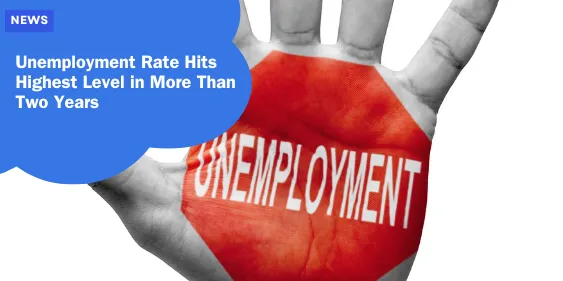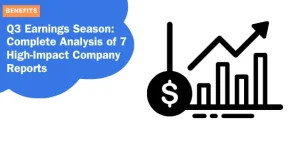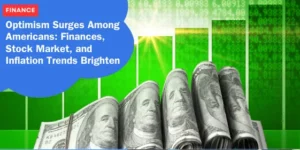Unemployment Rate Hits Highest Level in More Than Two Years

The United Kingdom faces escalating economic difficulties, with recent data revealing a notable increase in unemployment.
Official statistics show that the unemployment rate has surged to its highest level in more than two years, reaching 4.4% for the three months leading up to April.
This marks the most significant rise since September 2021.
Wage Growth Amid Rising Unemployment
Despite the upward trend in unemployment, wage growth has remained resilient.
Earnings continue to surpass inflation, presenting a complex economic scenario.
On one hand, the job market appears to be tightening, while on the other, those in employment are experiencing wage increases.
This dual trend highlights a challenging economic environment that requires careful consideration by policymakers.
The robust wage growth contrasts sharply with the shrinking job availability, adding layers of complexity to the economic landscape.
Increase in Economic Inactivity
Compounding the issue is the rise in the economic inactivity rate, which has now reached its highest point in nearly ten years.
Over 20% of the working-age population is classified as economically inactive, a factor that further exacerbates the economic challenges.
The economic inactivity rate among adults has remained persistently high in recent years. Initially spiking during the COVID-19 pandemic, it has shown few signs of decline since.
Insights from the Office for National Statistics
The Office for National Statistics (ONS) has reported signs of a cooling labor market.
Although earnings growth remains strong, the number of job vacancies has decreased, and unemployment has risen.
Regular earnings, excluding bonuses, have increased at an annual rate of 6%, unchanged from the previous month.
However, when adjusted for inflation, pay has grown at an annual rate of 2.9%, the highest since August 2021.
Impact of National Living Wage
Economists had anticipated a boost in pay following the increase in the National Living Wage in April.
For those aged 21 and over, the rate rose to £11.44 per hour, representing a 9.8% increase from the previous year.
This wage adjustment was expected to sustain relatively strong wage growth, even as other economic indicators suggested a cooling labor market.
Employer Payrolls and Job Vacancies
The ONS has advised caution in interpreting the unemployment figures due to the limited sample size of the survey.
Nevertheless, these statistics are corroborated by employer payroll data.
Between March and April, the number of employees fell by 36,000, continuing a downtrend into May.
Job vacancies also decreased by 9,000 to a total of 904,000, reinforcing the narrative of a cooling job market.
The Inactivity Rate and Long-Term Sickness
A notable aspect of the latest data is the high inactivity rate, which stands at 22.3% among working-age adults.
This translates to over nine million people not actively seeking employment.
The increase in long-term sickness is a significant factor behind this statistic. Since 2022, long-term illness has become the primary reason for economic inactivity among the working-age population.
Policymakers must address this trend to develop comprehensive solutions.
Implications for the Bank of England
The recent unemployment data will likely influence the Bank of England’s forthcoming decisions on interest rates.
The Bank’s next meeting is scheduled for next week to discuss these developments.
KPMG’s chief economist, Yael Selfin, suggests that the mixed data may not prompt an immediate change in interest rates.
She attributes the reduced demand for staff to fewer job roles and companies delaying hiring, indicating that the current data might not significantly affect the Bank’s monetary policy.
Perspectives from Economic Experts
Economic experts offer varying perspectives on the current situation.
Abrdn’s deputy chief economist, Luke Bartholomew, noted that while wage growth in the UK remains strong, the cooling labor market is unlikely to result in a major shift in the Bank of England’s approach.
He anticipates that the first interest rate cut could occur in August, provided there is continued progress in addressing underlying inflation pressures.
Government and Opposition Responses
The rise in unemployment has elicited diverse responses from government officials and political figures.
Work and Pensions Secretary Mel Stride acknowledged the increase but emphasized the historically low overall level of unemployment, highlighting the government’s strong employment record.
Conversely, Labour’s shadow work and pensions secretary, Liz Kendall, criticized the Conservative government’s economic management, attributing the current situation to 14 years of policy failures.
Similarly, Liberal Democrat Treasury spokesperson Sarah Olney likened the economic state to a chaotic rollercoaster under Conservative policies, reflecting public frustration.
The Green Party has also weighed in, suggesting that the increase in unemployment and deterioration in public services are indicative of a government detached from reality.
Plaid Cymru has criticized both the Conservative government in Westminster and the Labour administration in Wales for the high economic inactivity rate in Wales.
Conclusion: A Complex Economic Landscape
In summary, the rise in the unemployment rate to 4.4%, the highest level in over two years, presents a multifaceted economic challenge for the United Kingdom.
While wage growth remains strong, other indicators such as high economic inactivity and declining job vacancies paint a troubling picture.
The ONS’s caution about small sample sizes notwithstanding, broader employer payroll data supports the notion that these trends are significant.
As the Bank of England prepares to consider interest rate adjustments, these mixed signals will be crucial in shaping future economic policy.
The varying political responses highlight the urgent need for effective policy interventions to address the intertwined issues of unemployment, wage growth, and economic inactivity.
The coming months will be pivotal in determining whether corrective measures, such as interest rate cuts, will provide the necessary economic stimulus.






